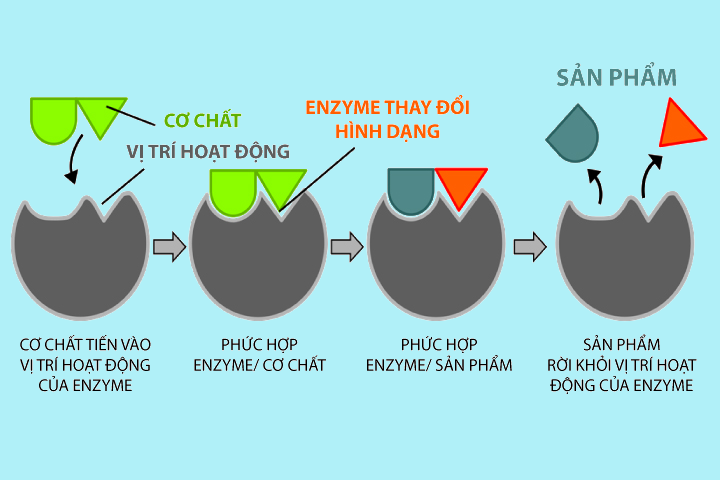The mechanism of enzyme activity is related to how they interact with molecules called substrates to participate in chemical reactions. This process typically follows a lock-and-key model, where enzymes and substrates form an enzyme-substrate complex (ES), creating an ideal environment for the chemical reaction to occur.
Here are the main steps in the mechanism of enzyme activity:
- Substrate Binding: Enzymes and substrates interact with each other through binding sites. Each enzyme has a specific region called the active site where the substrate binds. This process forms the enzyme-substrate complex.
- Formation of Reaction Environment: Inside the enzyme-substrate complex, the environment is often different from the surrounding environment. Enzymes can create specific chemical environments, such as maintaining a certain pH or temperature conditions conducive to the particular chemical reaction.
- Catalysis (Reaction Catalysis): Within the enzyme-substrate complex, the enzyme acts on the substrate to produce products. Enzymes create transition states for chemical reactions, reducing the activation energy required for the reaction to occur. This process may involve breaking chemical bonds in the substrate or forming new bonds to produce the products.
- Separation of Products and Enzyme: Once the reaction is complete, the products are formed and separated from the enzyme. The enzyme can continue to participate in other reactions.
- Enzyme Remains Unchanged: An important point in the mechanism of enzyme activity is that the enzyme is not changed or destroyed during the reaction. Enzymes can be reused multiple times to participate in various reactions.
Some common mechanisms that enzymes may employ to accelerate reaction rates include creating specific reaction environments, providing binding sites for substrates, lowering activation energy, and creating transition states for chemical reactions. Depending on the enzyme and substrate structure, as well as environmental conditions, the mechanism of enzyme activity can vary.

(0) Bình luận
Viết bình luận